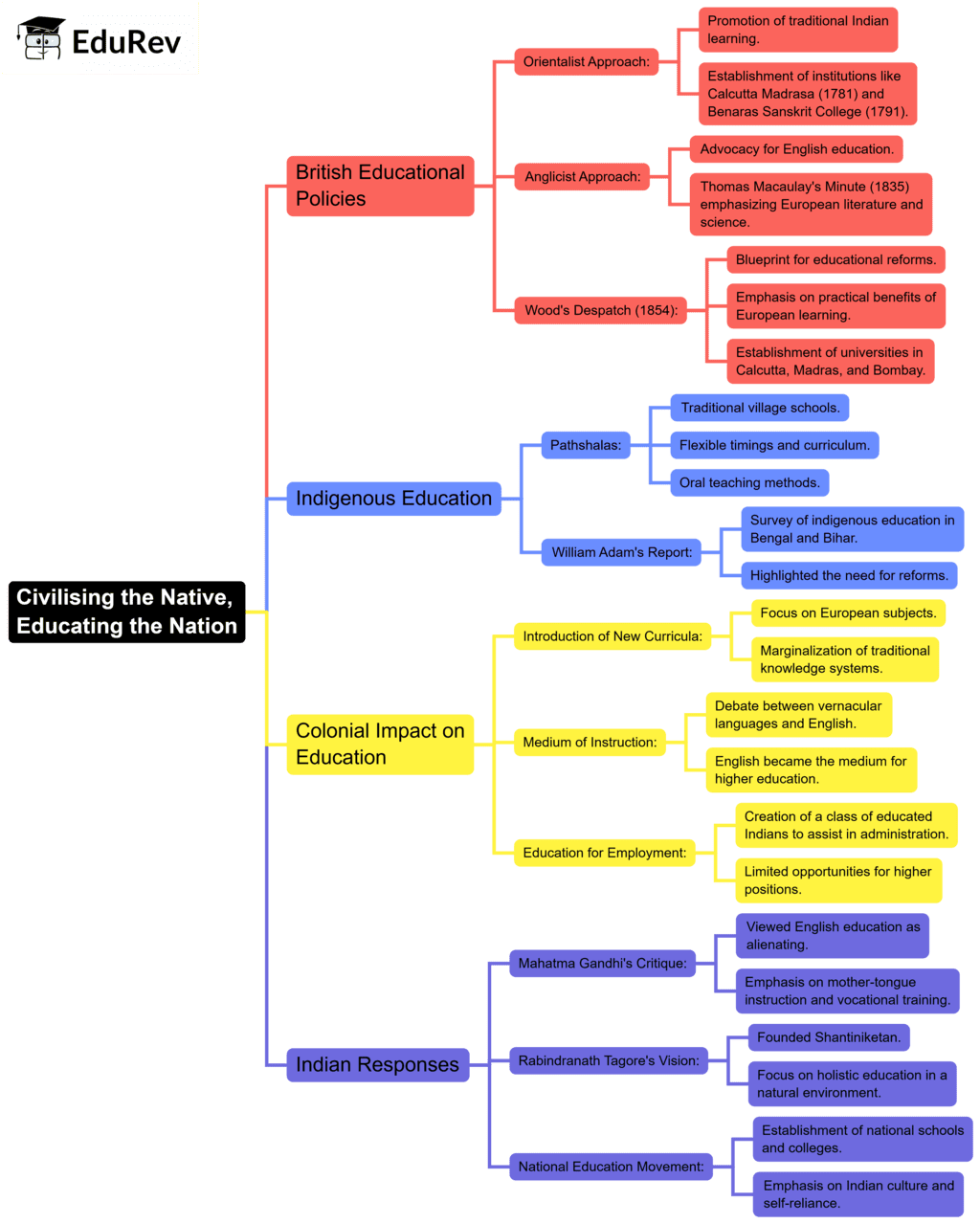Class 8 Exam > Class 8 Notes > Social Studies (SST) Class 8 > Mind Map: Civilising the Native, Educating the Nation
Mind Map: Civilising the Native, Educating the Nation | Social Studies (SST) Class 8 PDF Download

The document Mind Map: Civilising the Native, Educating the Nation | Social Studies (SST) Class 8 is a part of the Class 8 Course Social Studies (SST) Class 8.
All you need of Class 8 at this link: Class 8
|
69 videos|431 docs|46 tests
|
FAQs on Mind Map: Civilising the Native, Educating the Nation - Social Studies (SST) Class 8
| 1. What does "Civilising the Native, Educating the Nation" refer to in a historical context? |  |
Ans. "Civilising the Native, Educating the Nation" refers to the colonial ideology that aimed at transforming indigenous populations through education and cultural assimilation. This concept was prevalent during colonial rule, where colonial powers believed it was their duty to 'civilize' native populations by introducing Western education, values, and social structures. This often involved the suppression of local cultures and traditions in favor of European norms.
| 2. How did education play a role in colonial rule according to the article? |  |
Ans. Education was a key tool in colonial rule as it was used to instill a sense of inferiority among native populations while promoting the superiority of Western culture. Colonial governments established schools that aimed to educate natives in Western ways of thinking, often sidelining indigenous knowledge systems. This process was seen as a means to create a loyal and compliant workforce that would support colonial objectives.
| 3. What were the criticisms of the "civilising mission" during colonial times? |  |
Ans. Critics of the "civilising mission" argued that it was fundamentally hypocritical and often resulted in cultural genocide. They highlighted that the imposition of Western education and values led to the erosion of indigenous cultures and languages. Furthermore, it was seen as a justification for colonial exploitation, masking the economic and political motives behind colonialism under the guise of a benevolent mission.
| 4. In what ways did indigenous resistance manifest against colonial education policies? |  |
Ans. Indigenous resistance against colonial education policies often took the form of cultural preservation efforts, protests, and the establishment of alternative educational systems that reflected local values and traditions. Many communities sought to reclaim their narratives and history, emphasizing the importance of their languages and customs in the face of imposed Western education.
| 5. How has the legacy of colonial education systems impacted post-colonial nations? |  |
Ans. The legacy of colonial education systems has had lasting impacts on post-colonial nations, leading to ongoing debates about identity, cultural heritage, and educational reform. Many countries struggle with the remnants of a system that prioritized Western knowledge and marginalized local traditions. This has prompted movements for decolonization of education, advocating for curricula that honor and integrate indigenous knowledge alongside global perspectives.
Related Searches
















